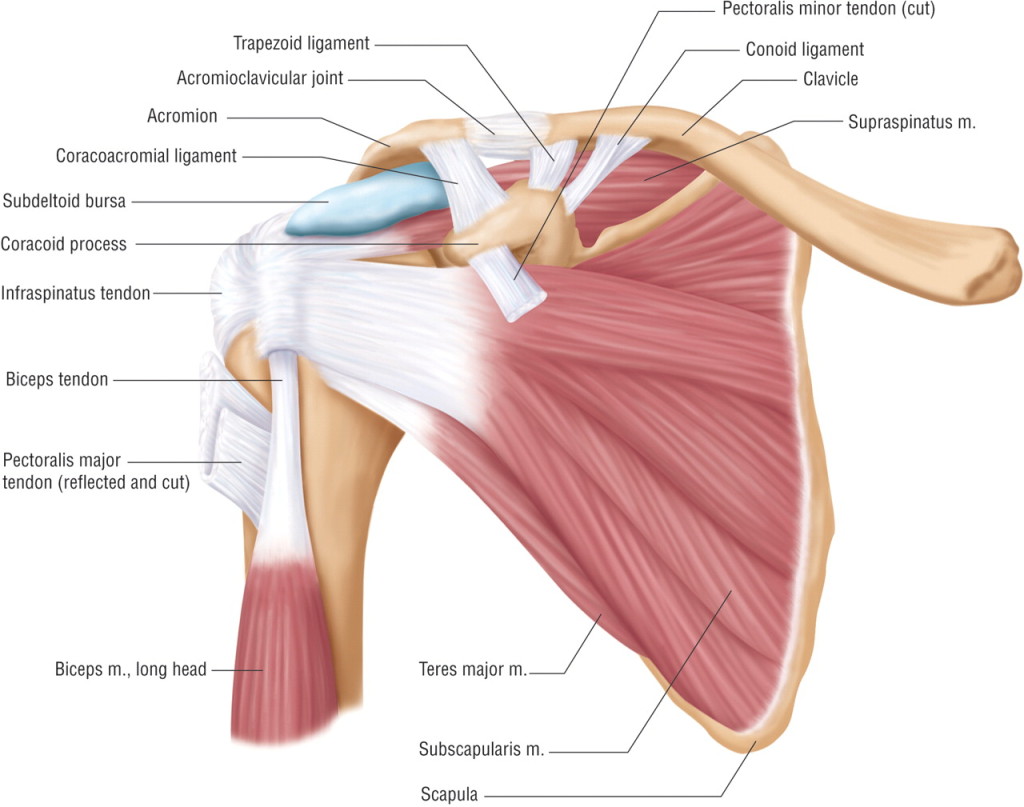There are some people who believe that CrossFit is dangerous. I have always believed that the sport of Crossfit does not cause injuries, it simply exposes our muscular imbalances. Unlike sports such as golf, tennis, or baseball, which are unilateral, a sport such as CrossFit requires total body balance and symmetry. If you throw caution to the wind, and go all out in a sport that you are not properly trained in, you are going to get injured. That same theory goes for most high intensity sports. If you do not take the time to create a strong foundation, you are setting yourself up for injury. And if you have any sort of muscular imbalances, it is just a matter of time before your body starts telling you to stop, and it does this in the form of pain. I see a lot of sports related injuries in my office, but the most common among all sports seems to be shoulder injuries. The majority of these injuries are due to ‘Scapular dyskinesis’, a collective term that refers to dysfunctional movement of the scapula i.e. ‘dys’-‐alteration of, ‘kinesis’-‐ movement.
The sport of CrossFit is all about efficiency of movement. Poor posture creates wasted energy and inefficient movement, which eventually leads to injury. Like most extremity injuries, we can usually trace the source of the problem back to the spine (axis of the body). When we lack mid back (Thoracic Spine) mobility, our head and shoulders are thrown forward, and the shearing force that the forward head position creates on the spine, neurologically shuts down the muscles that stabilize the shoulder. The majority of people that sit at a desk for a living are creating imbalances that are pulling their body into a hunched over posture.
The shoulder is the most mobile joint in the
body that consists of four joints and complex
balance of 17 muscles that must work in total
unison to create efficient movement and
stability. If you are lacking mobility and or
stability in any one of these muscles or joints, it
will make movements such as overhead squats,
presses, kettle bell swings, snatches,
handstands and even pull-‐ups virtually
impossible to perform correctly. If you have
not developed the strength to perform basic
body weight movements in a controlled form,
you should definitely not be using momentum
to make them easier. For example, if you are not able to string together at least 5 strict pull-‐ups with proper form, you should not be moving on to kipping pull-‐ups.
To fully reach that overhead position, the humerus (upper arm bone) and scapula (shoulder blade) must work in sync, otherwise known as “scapulohumeral rhythm”. For every two degrees of humeral movement, there is one degree of scapular upward rotation. Proper scapulohumeral rhythm is necessary, as it maintains
optimal muscle length and contraction of the rotator cuff muscles. The rotator cuff muscles are responsible for maintaining the correct position and stability of the ball and socket joint of the shoulder.
Scapular dyskinesis is often associated with tightness at the front of the shoulder (shortness of the pectoralis major/ minor muscles) and weakness of the lower trapezius and serratus anterior muscles. It is responsible for functional narrowing of the subacromial space during the overhead motion, leading to pain in the abduction (fully overhead) and externally rotated position. This is often noticed in the early stages of shoulder disorders and often associated with impingement and rotator cuff injury. The altered position of the scapular places increased tensile strain on the ligaments in the front of the shoulder, and increases the risk of a Superior Labrum Anterior and Posterior tear otherwise known as a SLAP lesion.
Most common symptoms of shoulder dyskinesis are:
- Winging of the scapula
- Pain at the front, back, or top of the shoulder
- Instability and clicking
- Noticeable hitches and jumps in scapular motion during arm movements
- Pain on the outside of your upper arm
Treatment of scapular dyskinesis starts with a thorough evaluation of the shoulder and spine. Then reduction of pain symptoms and muscle adhesions is achieved by using modalities such as Ice/Heat, Electric stimulation, Cold Laser, Myofascial Release and Ultrasound. A functional rehabilitation program is essential to strengthen the muscles that have become weak and lengthen those that are chronically short in order to restore proper movement of the shoulder. Mobilization of the spine is essential to facilitate extension and to activate the nerves that directly affect the muscles of the shoulder. Mobilization techniques using tools such as foam rollers or lacrosse balls should also become part of your daily routine. In some cases an orthopedic referral is necessary for surgical repair. We must also avoid certain exercises that will provoke the symptoms and prolong the recovery process.
Move Well, Live Well.
